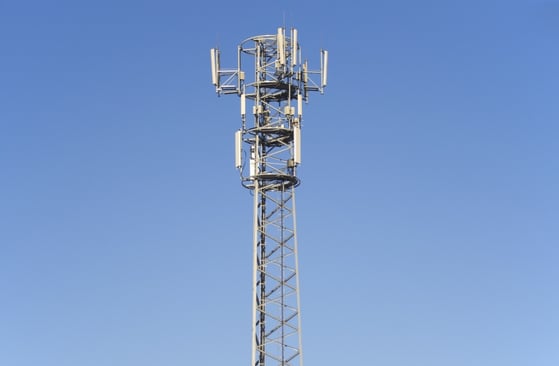Back to articles
Open cellular standards to drive IoT adoption

Several technologies are battling for the market that will underpin the Internet of Things, but only low power LTE promises to support rapid mass deployment.
The Internet of Things (IoT) will require several wireless technologies if it’s to meet its potential. For example, Bluetooth low energy or IEEE 802.15.4 are good choices for battery-powered sensors but for sensors that are constantly moving, or are remote from a LAN, such relatively short range wireless technologies run into problems.
Read more: 6 wireless technonolgies for wearables
Even if a LAN is present, manufacturers might prefer longer-range wireless technology for its convenience and autonomy. For example, a white goods manufacturer could select cellular technology over Wi-Fi because it enables a refrigerator or washing machine to connect to the Cloud automatically, eliminating the need for a consumer to enter a password to add the appliance to a home’s LAN. In these situations, Low Power Wide Area Networks (LPWAN) promise an answer.
Read more: [Infografic] What is PAN, BAN, WAN and LPWAN?
Proprietary vs open standards
There are several technologies upon which LPWANs can be based. These divide into two camps: those based on proprietary systems and those based on open standards. Low power LTE (also dubbed ‘cellular IoT’) is among the latter and is the basis of Nordic Semiconductor’s nRF91 Series products – due for selected sampling later this year.
Low power Long Term Evolution (LTE) has taken off since the 3rd Generation Partnership Project (3GPP - the custodians of the LTE standard) introduced a specification for two forms of the technology—LTE-M and Narrow Band-IoT (NB-IoT)—in Release 13 of the standard. The new specification makes it easier for manufacturers to design and develop the inexpensive, compact, and low power consumption wireless LTE modems that LPWANs demand.
Supporting LTE
Nordic Semiconductor supports low power LTE because we believe it’s the most promising technology for kickstarting rapid mass deployment of LPWANs and hence will accelerate growth of the IoT.
LTE is an open standard, operates in a licensed portion of the RF spectrum, leverages existing infrastructure for coverage, and has coexistence mechanisms that enable scaling to high-node counts per base station.
In contrast, proprietary technologies limit the participation in the vendor ecosystem and innovation in technology evolution over time. As they operate in unlicensed allocations of the RF spectrum (typically sub-1 GHz), coexistence could also be a challenge.
Stimulating adoption with LTE
Our experience with Bluetooth has demonstrated that open standards stimulate rapid adoption of new technology. Telecoms equipment maker Ericsson and the mobile operators trade body GSMA both forecast that the market for cellular IoT will expand at around 27 percent annually between 2017 and 2021. Both organizations point to low power LTE as a key enabler for this growth.
Low power LTE operates in up to 44 different licensed frequencies across the world, ranging from 450 MHz to 2.6 GHz. By using the licensed spectrum, the owners of the spectrum allocation (the carriers) can control and prioritize data, and the bands are immune from interference from other sources of RF radiation.
Because the spectrum allocation isn’t shared with other RF transmissions, coexistence between connected devices is much easier to manage. LTE’s coexistence technology is based on proven frequency- and time-domain solutions, and other mechanisms such as ‘autonomous denials’ of conflicting RF signals.
Consequently, LTE can support a node density of up to 200,000 active low power modems per base station. Finally, data carried over LTE is safe from prying eyes because the standard has incorporated advanced security from its inception. These features ensure that carriers can offer reliability and high quality of service.
Challenges faced by proprietary technologies
Proprietary technologies rely on unlicensed portions of the RF spectrum which must be shared with many other services. While basic interference avoidance techniques are employed, so many services are sharing the spectrum allocation that it is extremely difficult to approach, let alone match the node density, reliability, and quality of service of LTE.
Proprietary LPWAN vendors are also faced with the major challenge of building infrastructure to support their networks. These are likely to be expensive and long-winded projects slowing adoption.
In contrast, worldwide LTE infrastructure is largely in place comprising 480 networks in 157 countries. Some upgrading (mainly of software) is required to support low power LTE, but this is trivial compared to building the infrastructure in the first place. Because the infrastructure is installed, support for low power LTE is likely to be added rapidly, further encouraging its uptake.
Nationwide coverage is in place in USA, the Netherlands, Ireland and Australia. There are currently ongoing regional trial deployments in a range of other countries with the goal of fine-tuning network performance for country wide deployments. By the end of 2017 a significant portion of the world will feature network coverage.
Leverage infrastructure and stay relevant
Companies adopting low power LTE for their IoT-connected products can leverage this infrastructure without bearing its build- or maintenance-costs, instead investing in their own services and business models.
Read more: Why run IPV6 over Bluetooth low energy?



